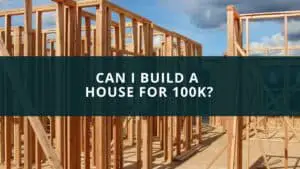Have you ever been to Mexico? One of the first things you’ll notice here is that the homes are usually built with concrete. So, why are houses in Mexico made of concrete?
Houses in Mexico are built with concrete due to factors such as its cost and accessibility, culture and heritage, resilience against the common natural disasters in the country, and its compatibility with the weather. Concrete has several benefits, but it’s not without significant disadvantages.
Regardless of its disadvantages, concrete has become more common for residential homes construction. Gone are the days when contractors only used it for commercial buildings. Here, we discuss why Mexicans use concrete for their houses.
Quick navigation
Reasons why Mexicans Build with Concrete
The prevalent use of concrete for construction in Mexico is due to the following reasons:
1. Cost
Concrete is one of the most cost-effective ways to build homes in Mexico. While the material can be slightly expensive, it’s readily available, and many skilled masons can build homes using concrete. However, for other building materials, especially wood which is common in the US and Canada, the cost of the material isn’t that cheap. This is because Mexico doesn’t have the significant wood reserve that US and Canada have. Beyond that, the cost of building with wood in Mexico is quite high because there aren’t many skilled builders who can use this material. So, the labor cost is usually high and has deterred many from even considering any other material apart from concrete. Mexico also doesn’t have abundant forestry reserves, which means if most homes are built using wood, the county will have to import lumber which can be quite expensive.
2. Culture
Building with wood isn’t part of the Mexican culture. Those who colonized the country, the Mesoamerican civilizations, and the Spaniards, used hard materials such as stones for building. This has since transformed over time into the use of concrete and cement. In Mexico, the old Spanish architecture is made with hard materials, mostly stones and concrete. This shows how this material has become mainstream over time. In Mexico, most people focus on durability and low maintenance, all things which concrete offers above the wood and most of the other building materials.
3. Natural Disasters
Mexico is prone to natural disasters like earthquakes, wildfires, hurricanes, and flooding. With all these issues, concrete appears to be the best choice for building homes that can stand a chance against these disasters. Unlike wood, it’s not flammable, which means that wildfires won’t easily damage concrete homes. It also means that it’ll take a significant hurricane to cause any damage to a well-constructed concrete house. A category 3 hurricane can often destroy a wooden house, but that’s unlikely to happen to a concrete one. Flood damage doesn’t affect concrete homes as much as wooden homes, and Mexico receives a large amount of rainfall and hurricanes, making using concrete a better option. Of course, as strong as concrete can be, it’s also prone to damage, especially from earthquakes common in Mexico. Most cities in Mexico are in the seismic zone and get hit by different categories of earthquakes. The higher the earthquake’s intensity, the more likely it is that a concrete home will collapse during the earthquake. But concrete is still the strongest material to use in earthquake-prone areas.
4. Weather
Mexico has a warmer climate than most parts of North America, such as Canada and the US. With such weather, concrete is the best construction material. Concrete is a good insulator which makes it capable of keeping the house cool during the summer months when the temperature outside is very high. With concrete, the cool air indoors remains so for more time as long as no one opens the window. Warmer climates also attract more pests, including termites which can do the most damage to any wooden property but can’t have any effect on a concrete building. It doesn’t get really cold in Mexico. The climate here also comes with a lot of rainfall annually, which can seriously affect all other materials, especially wood. The high humidity rarely affects well-built concrete homes, making them a better option in Mexico. Even though they can be cold during the winter, Mexico doesn’t have severe winters with snow like the US and Canada, which means most people have nothing to worry about.
Pros Of Using Concrete
Mexico isn’t the only country that uses concrete. Most countries do. The US and Canada are also using it more often than ever before. The rise in the use of concrete is due to several reasons such as:
1. Flexibility
Concrete is malleable and has a flexibility that almost no other building material can claim. It can be shaped into just about anything, and there are various styles for building with concrete. For example, it’s possible to make concrete blocks and transport them for construction. Some people prefer precast concrete slabs. The flexibility of use and design that concrete offers are something that many people like.
2. Durability
If you’re building a home to last, you’ll most likely need to use concrete. It’s strong and sturdy and can last for decades without needing anything besides retouching. Concrete also doesn’t require serious maintenance as long as it doesn’t have structural damage and has high resistance to almost anything from fire to flood. The durability of concrete beats that of any other material that a person might use for construction, and it’s possible to improve this durability by combining it with other materials such as steel.
Cons of Concrete
Despite the several pros of concrete, it also has disadvantages such as:
1. Risk Of Damage
While concrete can be very durable, it can also get damaged easily in some cases. You’ll need to use high-quality Portland cement to make the concrete, or else it’ll disintegrate when it comes in contact with alkali. It also has low tensile strength, which means it needs reinforcements to be at its best. Under extremely cold conditions, concrete can rupture and split, making it inappropriate for building in very cold areas.
2. Cost Of Maintenance
If concrete gets damaged, the cost of fixing it is much higher than that of other materials. This is especially the case when the damage is structural. Structural damage to concrete can render it completely useless and make it necessary to demolish it.
In Conclusion
There are good reasons for the use of concrete for construction in Mexico. Over the years, contractors in the US are also starting to use concrete more often.



